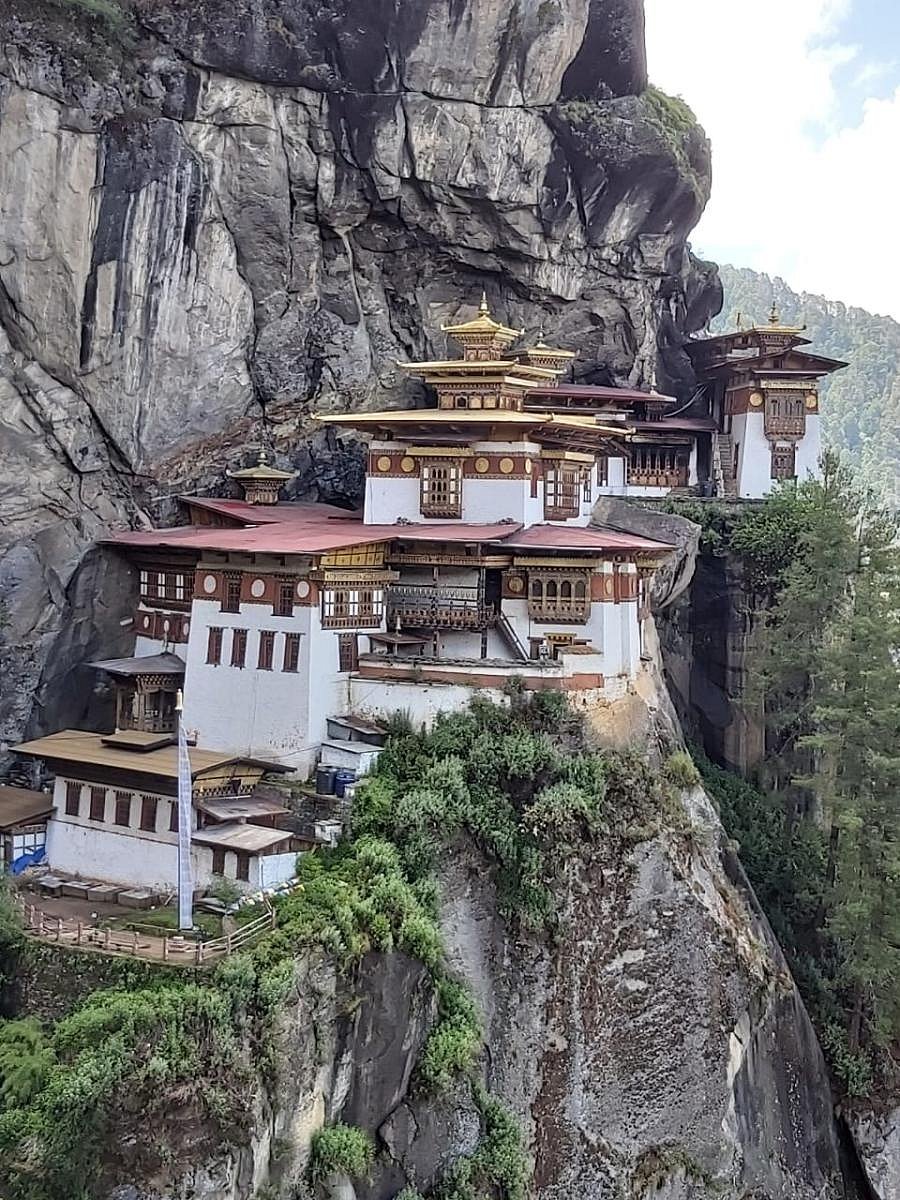
Landlocked Bhutan is ranked 95th out of 156 countries in the 2019 United Nations World Happiness Report, but the so-called “happiness” has a different connotation in this picturesque, tiny country of barely 7.8 lakh people.
Bhutan considers itself as one of the happiest countries in the world going by its own index of ‘Gross National Happiness’ as opposed to Gross Domestic Product to measure progress or development. A week-long trip to Bhutan gave us some indications as to why.
The constitution of the country mandates that at least 60% forest cover must be maintained at all times and it currently stands at 72%; Bhutan and Surinam are the only two nations on this planet which are carbon negative, meaning, they absorb more carbon than they emit.
Nearly two-thirds of the country can be covered only by foot, which means less vehicles and less pollution. With little industrialisation, both air and water remain pristinely pure.
After getting off at Bagdogra Airport, our six-hour road journey to Bhutan commenced from Siliguri in West Bengal to Phuentsholing, which is mainly a transit city in southern Bhutan with an immigration outlet. As Indians don’t need visa, you just cross over to the other side with not even a semblance of a barricade, stay overnight at any one of the decent hotels in Phuentsholing, and present yourselves the next day at the immigration counter for registration and necessary permit.
Though no formal border separates the two countries, Jaigaon, the last post on the Indian side, and Phuentsholing on the other, provide such a contrast that it is too stark to miss. While Jaigaon presents a picture of chaos with all types of vehicles trying to navigate at a snail’s pace through petty shops and pushcart vendors virtually encroaching on what is left of a pothole-riddled road, the entry into the arch, signalling the commencement of the Bhutan territory, offers such an orderly picture of a quaint town, that instantly you feel a sense of calmness and happiness.
Picturesque
Phuentsholing to Thimphu, the capital city, is an eye-catching seven-hour drive through green mountains, valleys and waterfalls, which leave you more refreshed than exhausted. There is an air of sophistication to Thimphu with its neat layout, buildings following a uniform structural pattern, and a fairly busy traffic moving without a fuss. Throughout Bhutan, vehicle drivers do not honk, rather wait for pedestrians to cross the roads, and there are no traffic jams even though there is not a single traffic signal anywhere. Thanks to the hefty fines for violation of rules, even drivers coming from the West Bengal side quietly fall in line.
After a short journey from Thimphu city, we reached Buddha Dordenma, a huge gold-plated statue of Buddha which is installed atop a hill overlooking the Thimphu Valley. A leisurely walk around the statue, which is surrounded by golden fairies in different postures, allows the visitor to grasp its enormity. After circumabulating, one can actually walk inside the monument to see hundreds of statues of Buddha and colourful paintings, which boggle the mind with both their size and variety.
Spectacular
As we head towards Punakha, which was the capital of Bhutan till 1960, we come across Dochula Pass, which has a clutch of 108 chortens (stupa), built in the memory of brave soldiers who have protected the territorial integrity of Bhutan over centuries. Bhutan has a proud record of never being conquered. But until a few decades ago, it had to constantly fight invading forces from Tibet and China. After India’s independence, it has found a reliable benefactor in India whose armed forces stationed at all border points provide security, which serves the mutual interest of the two neighbours with a common enemy. Dochula Pass offers a spectacular 360 degree panoramic view of the valleys overlooking the mountains which get draped with snow during winter.
Each of the 20 districts of Bhutan has a dzong or a fort-like building which acts as a centre of administration. As religion and culture form an integral part of the life of Bhutanese — at least one person in a family takes up monkhood — a portion of the fortress is devoted to accommodate the monks who need shelter during the severe winter.
The Punakha dzong, the oldest and the grandest palace built in 1637, on a stretch of land where the Pho Chhu and Mo Chhu rivers converge, is truly an imposing structure.
As we approach Pobjikha Valley — nicknamed the little Switzerland of Bhutan — we are greeted by three beautiful teenaged girls of Yakaha family with an elaborate lunch on the meadows. The homestay with the Yakahas gave us a taste of their graceful hospitality, including hot stone-water bath, which felt heavenly for our tired muscles.
Cliffhanger
The last leg of the journey was to Paro, which hosts the legendary Tiger’s Nest Monastery perched at a height of 3,000 metres on the edge of a vertical cliff. Legend has it that Guru Rinpoche — who brought Buddhism to Bhutan in the 8th century — flew to this cliff on a flaming tigress and meditated here. A visit to this spectacular monastery involves a moderately tough trekking, but it is a highly rewarding experience.
As a matter of fact, Bhutan offers a variety of adventure sports, including trekking, river rafting and kayaking to explore its beautiful landscapes, flora and fauna with seasonal variations. For Indian visitors, a second land route has opened up from Assam at Gelephu, after decades of being off-limits due to security concerns. Manas wildlife sanctuary in Assam, which seamlessly extends into the eastern Himalayan hills of Bhutan to be known as Royal Manas National Park, is home to one-horned rhinos, wild elephants and golden langur monkeys, and has earned the tag of Natural World Heritage. Need no more reasons to visit this happy land.